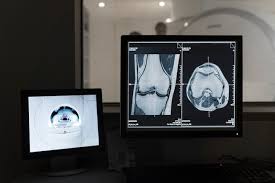Artificial Intelligence (AI) is increasingly becoming a transformative force in healthcare, particularly in the field of radiology. By leveraging advanced algorithms and machine learning techniques, AI systems are capable of analyzing medical images with remarkable speed and precision.
This technology offers the potential for improved diagnostic accuracy and efficiency, enabling radiologists to identify conditions that may be missed by the human eye. For instance, AI can assist in detecting tumors, fractures, and other abnormalities in imaging studies, thereby enhancing patient outcomes and streamlining workflows. However, as AI continues to integrate into radiological practices, it also raises significant ethical challenges that warrant careful consideration. These challenges include issues related to bias in algorithms, data privacy and security, algorithmic transparency, and the necessity of human oversight.
Bias in AI Algorithms
Bias in AI algorithms is a critical concern that can significantly impact diagnostic outcomes in radiology. Biases can be inadvertently introduced during the data collection process, model training, or even in the interpretation of results. For example, if the training datasets used to develop AI algorithms lack diversity or are not representative of the broader population, the resulting models may perform poorly for certain demographic groups. This can lead to misdiagnoses or delayed treatment for underrepresented populations, thereby perpetuating existing healthcare disparities.
In radiology, specific biases may arise related to race or gender. For instance, an AI system trained predominantly on imaging data from one racial group may not accurately recognize conditions in individuals from other racial backgrounds. Similarly, gender biases can manifest if the dataset reflects historical disparities in healthcare access or treatment patterns. Such biases not only undermine the efficacy of AI in improving patient care but also raise ethical questions about equity and fairness in medical practice.
Data Privacy and Security
The sensitive nature of medical data makes data privacy and security paramount in the context of AI in radiology. Medical images and associated patient information are often stored and processed in large datasets, which can be vulnerable to breaches and unauthorized access. The risks associated with mishandling this data are significant; unauthorized access could lead to identity theft, discrimination, or other harmful consequences for patients.
To mitigate these risks, it is essential to implement robust data anonymization and encryption practices. Anonymization removes personally identifiable information from datasets, while encryption protects data during storage and transmission. Additionally, compliance with regulations such as the Health Insurance Portability and Accountability Act (HIPAA) in the United States and the General Data Protection Regulation (GDPR) in Europe is crucial. These regulations outline strict guidelines for handling sensitive medical information, ensuring that patients’ rights to privacy are upheld while fostering trust in AI technologies.
Algorithmic Transparency and Explainability
One of the significant challenges associated with AI in radiology is the “black box” problem. Many AI models operate in ways that are not easily interpretable by humans, making it difficult to understand how decisions are made. This lack of transparency poses ethical dilemmas, particularly when it comes to patient care and safety.
Understanding how AI algorithms arrive at their conclusions is essential for building trust among healthcare professionals and patients alike. The need for transparency and explainability in AI algorithms cannot be overstated; stakeholders must be able to comprehend the reasoning behind AI-driven decisions to ensure informed consent and accountability in clinical practice.
Efforts must be made to develop interpretable models that provide insights into their decision-making processes while maintaining high levels of accuracy.
Human Oversight and Accountability
Despite the advancements brought by AI, human radiologists remain an integral part of the diagnostic process. The role of radiologists in an AI-assisted workflow is critical; they provide essential context, clinical judgment, and expertise that algorithms cannot replicate. Human oversight is necessary to mitigate potential errors and biases introduced by AI systems, ensuring that diagnostic processes remain safe and effective.
Moreover, questions of liability and accountability arise when AI-related errors occur. If a misdiagnosis happens due to an AI algorithm’s failure, determining who is responsible—be it the software developers, healthcare providers, or institutions—can be complex. Establishing clear guidelines for accountability is essential to navigate these challenges and maintain patient safety.

Potential for Misdiagnosis and Its Consequences
The integration of AI in radiology offers remarkable potential for enhancing diagnostic accuracy; however, it also introduces the risk of misdiagnosis. AI algorithms, while sophisticated, are not infallible and may produce erroneous results due to limitations in training data or inherent biases. Misdiagnosis can lead to inappropriate treatment plans, delayed interventions, and even exacerbation of a patient’s condition. The consequences of such errors extend beyond individual patient outcomes, potentially undermining public trust in medical technologies and healthcare systems as a whole. Therefore, it is crucial to implement robust validation processes and continuous monitoring of AI performance to mitigate the risk of misdiagnosis.
Impact on Patient-Physician Relationships
The deployment of AI in radiology has the potential to alter the dynamics of patient-physician relationships. While AI can enhance diagnostic efficiency, it may also create a sense of detachment between patients and healthcare providers. Patients may feel that their care is being dictated by algorithms rather than human judgment, leading to concerns about the loss of the personal touch in healthcare. Furthermore, if patients perceive AI as a replacement for human expertise, this could result in diminished trust in their physicians. It is essential for healthcare professionals to communicate effectively with patients about the role of AI in their diagnosis and treatment, ensuring that patients understand that AI serves as a tool to augment, rather than replace, human expertise.
Ethical Considerations Related to Overreliance on AI
Overreliance on AI in radiology raises significant ethical concerns. As AI systems become more integrated into clinical workflows, there is a risk that radiologists may defer too much to these technologies, potentially compromising their critical thinking and diagnostic skills. This dependency can lead to a diminished capacity for independent decision-making, which is essential in complex cases where nuanced clinical judgment is required. It is vital to strike a balance between leveraging AI’s capabilities and maintaining the essential role of human expertise in radiology. Continuous education and training for radiologists will be necessary to ensure they remain proficient in their skills while effectively utilizing AI tools.
The Future of AI in Radiology
Potential Solutions and Future Directions to Address Ethical Challenges
Addressing the ethical challenges posed by AI in radiology requires a multifaceted approach. One potential solution is the development of standardized protocols for AI implementation that include rigorous testing for bias and accuracy across diverse populations. Additionally, fostering interdisciplinary collaboration among technologists, ethicists, and healthcare providers can facilitate comprehensive discussions about the implications of AI use in clinical practice. Ongoing education and training programs should be established to equip radiologists with the skills needed to interpret AI-generated results critically. Furthermore, engaging patients in discussions about the role of AI in their care can help bridge the gap between technology and human interaction.
The Importance of Ethical Guidelines and Frameworks
The establishment of ethical guidelines and frameworks is essential for navigating the complexities of AI in radiology. These guidelines should address issues such as algorithmic transparency, data privacy, accountability, and informed consent. Regulatory bodies and professional organizations must collaborate to create comprehensive standards that ensure the ethical deployment of AI technologies in clinical settings. Such frameworks will provide a foundation for responsible innovation while safeguarding patient rights and promoting equitable access to advanced diagnostic tools.
Conclusion
The integration of AI into radiology presents both exciting opportunities and significant ethical challenges. While AI has the potential to enhance diagnostic accuracy and efficiency, concerns related to misdiagnosis, patient-physician relationships, and overreliance must be carefully addressed. By implementing robust solutions and establishing ethical guidelines, stakeholders can navigate these challenges effectively. The future of AI in radiology should prioritize ethical considerations alongside technological advancements to ensure that patient care remains at the forefront of medical practice.
FAQ
What is algorithmic bias, and how does it affect AI in radiology?
Algorithmic bias refers to systematic errors in an AI system that lead to unfair treatment or inaccurate results for certain groups of people. In radiology, this can manifest when an AI algorithm trained on non-diverse datasets fails to accurately diagnose conditions in underrepresented populations, leading to disparities in healthcare outcomes.
How can we ensure data privacy and security in AI-assisted radiology?
To ensure data privacy and security in AI-assisted radiology, healthcare organizations must implement stringent data protection measures such as encryption, anonymization of patient information, and compliance with regulations like HIPAA and GDPR. Regular audits and staff training on data handling practices are also essential.
Who is responsible if an AI system makes a wrong diagnosis?
Determining responsibility for a wrong diagnosis made by an AI system can be complex. Accountability may fall on multiple parties, including the software developers who created the algorithm, healthcare providers who relied on its recommendations, or institutions that implemented the technology. Clear guidelines must be established to address liability issues.
What are the potential benefits and drawbacks of using AI in radiology?
The potential benefits of using AI in radiology include improved diagnostic accuracy, enhanced efficiency in image analysis, and reduced workloads for radiologists. However, drawbacks may include risks of misdiagnosis due to algorithmic bias, potential erosion of the patient-physician relationship, and ethical concerns related to overreliance on technology. Balancing these factors is crucial for successful implementation.


Add a Comment